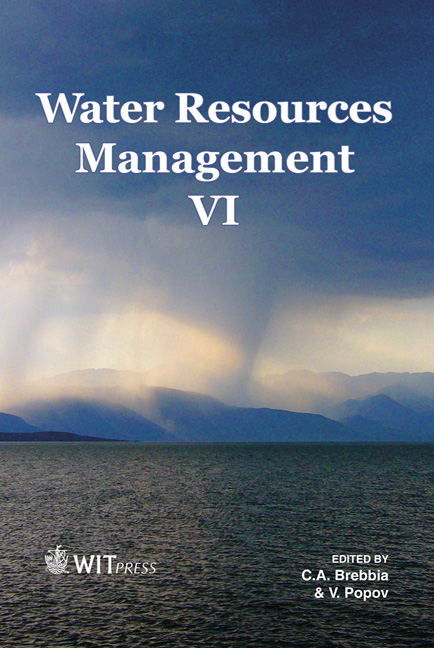A Simple Wetting And Drying Method For Shallow Water Flow With Application In The Vitória Bay Estuary, Brazil
Price
Free (open access)
Transaction
Volume
145
Pages
11
Page Range
215 - 225
Published
2011
Size
1,064 kb
Paper DOI
10.2495/WRM110181
Copyright
WIT Press
Author(s)
M. L. C. Barros, P. C. C. Rosman, J. C. F. Telles & J. P. S. Azevedo
Abstract
This paper presents a simple and effective method to model wetting and drying processes in natural water bodies. The proposed method has been nicknamed \“rough-porous layer”, or RPL. It bears similarities with the so called marsh porosity method, but is simpler to implement, mass conserving and does not affect wave celerity in wet areas. The method can be easily implemented in finite element models, what makes it useful in numerical modeling of natural water bodies with intricate topographies. A standard testing case of a basin with variable slope is used for validations and comparison with other methods. The effectiveness of the RPL is better evaluated in modeling the complex Vitória Bay estuary (Brazil) with its extensive mangrove areas. Keywords: wetting and drying, Vitória Bay estuary, mangrove swamps, finite element method. 1 Introduction Coastal water bodies such as bays and estuarine systems quite often present mangrove swamps, marsh and other wetlands. These regions play an important role in ecosystem productivities contributing to both territorial and marine biodiversity. These wetlands are maintained mainly by periodic drying and wetting processes [4]. Thus, the ability to represent such processes is essential in
Keywords
wetting and drying, Vitória Bay estuary, mangrove swamps, finite element method





